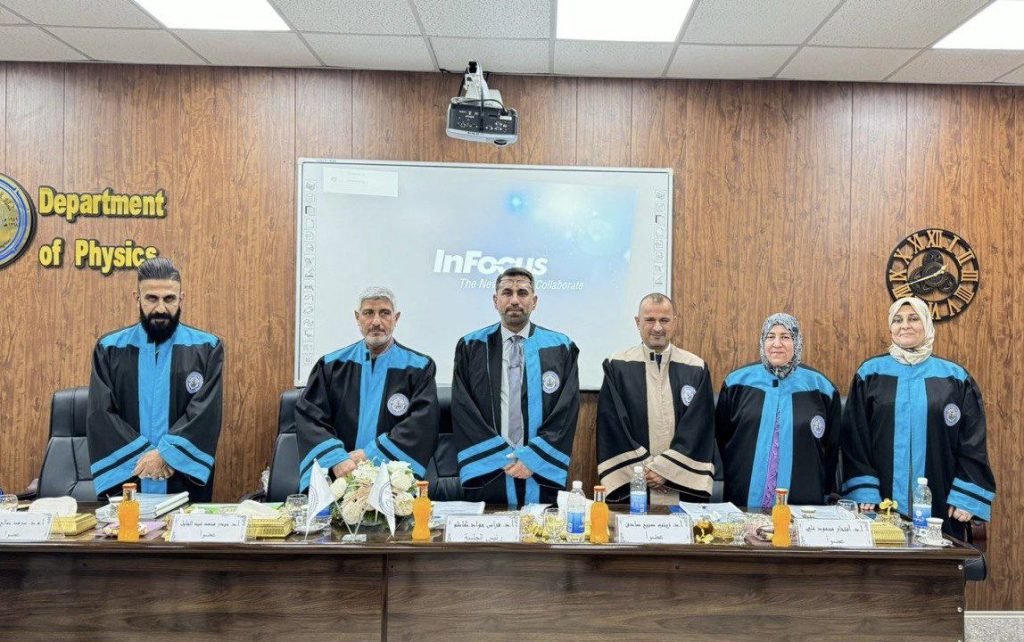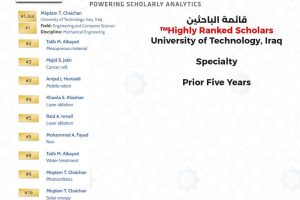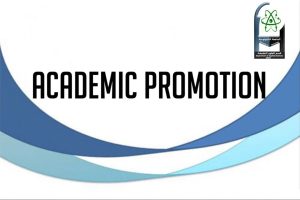
A faculty member from the Branch of Applied Physics obtains a Ph.D. for his research on:
“Preparation and Structural Investigation of Activated Carbon Nanostructures Derived from Natural Materials for Solar Cell Applications.”

Faculty Member from the Branch of Applied Physics Earns a PhD for Research on Carbon Nanostructures for Solar Cell Applications
Lecturer Ammar Makhlaf Jasim, a faculty member in the Branch of Applied Physics, has been awarded a PhD for his dissertation titled:
“Preparation and Structural Investigation of Activated Carbon Nanostructures Derived from Natural Materials for Solar Cell Applications.”
The PhD defence was held at the Department of Physics, College of Science, University of Baghdad, under the supervision of Prof. Dr. Nadhira Abbas Ali.
The study aimed to synthesize nanostructured activated carbon from potato peel waste using physical and chemical activation methods. The research focused on determining the structural phases and compositions to evaluate the feasibility of using these nanomaterials in dye-sensitized solar cells (DSSC). The use of potato peel waste to produce activated carbon offers high purity and an extremely large surface area, aligning with the increasing demand for renewable energy sources through clean technologies.
The dissertation concluded that potato peel waste serves as an excellent natural source of activated carbon, which can be used as a counter electrode in DSSCs, providing a cost-effective alternative to expensive gold and silver nanolayers. Additionally, the production of activated carbon from potato peels can be optimized by adjusting parameters such as activation temperature and heat exposure duration, which influence the porosity and structural properties of the material.
The use of activated carbon in dye-sensitized solar cells enhances both light absorption efficiency and electrical conductivity. As an abundant and low-cost material, activated carbon is gaining increasing popularity in renewable energy generation.


